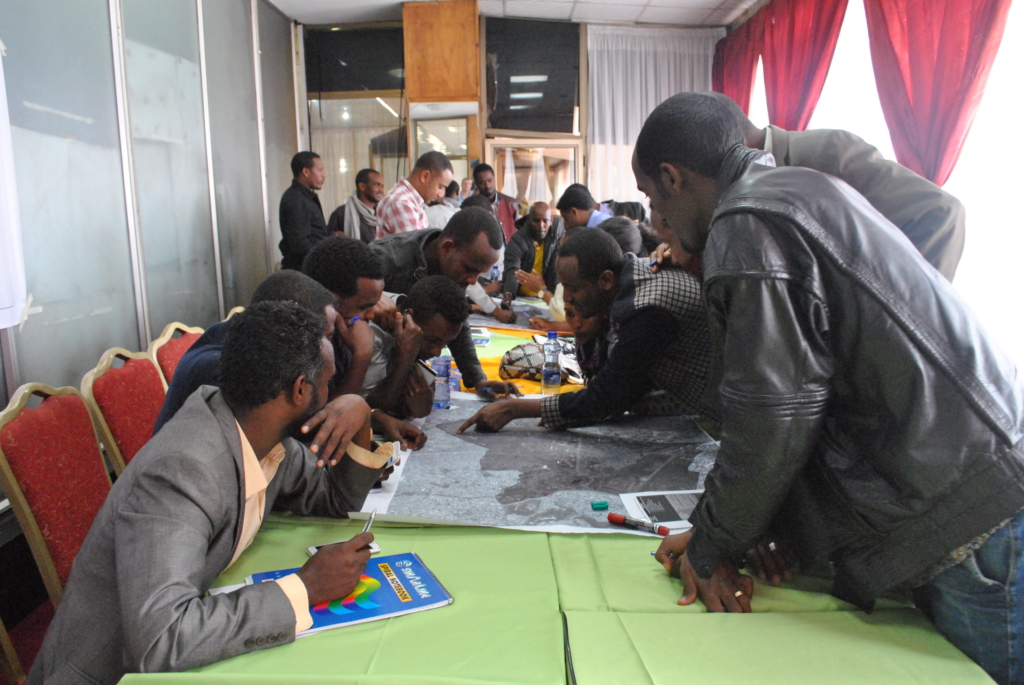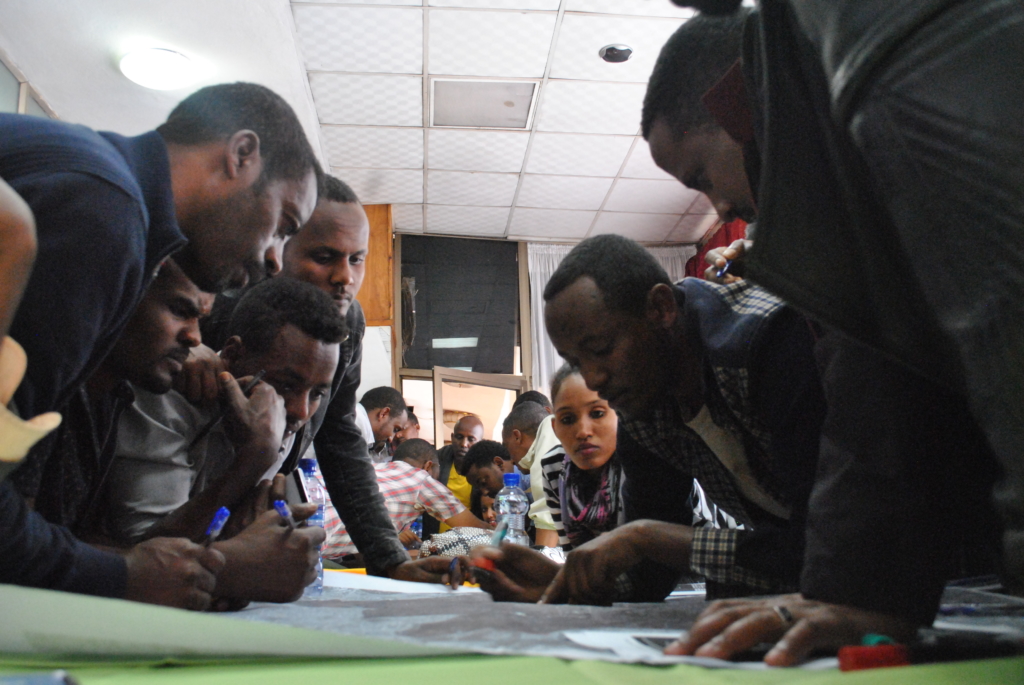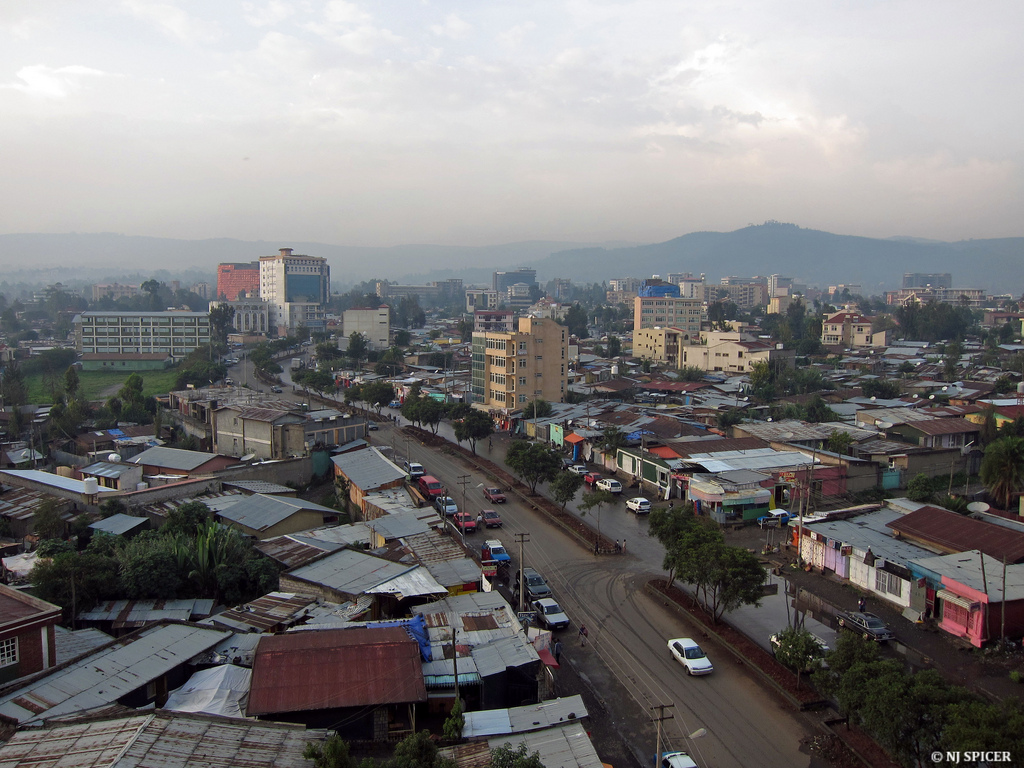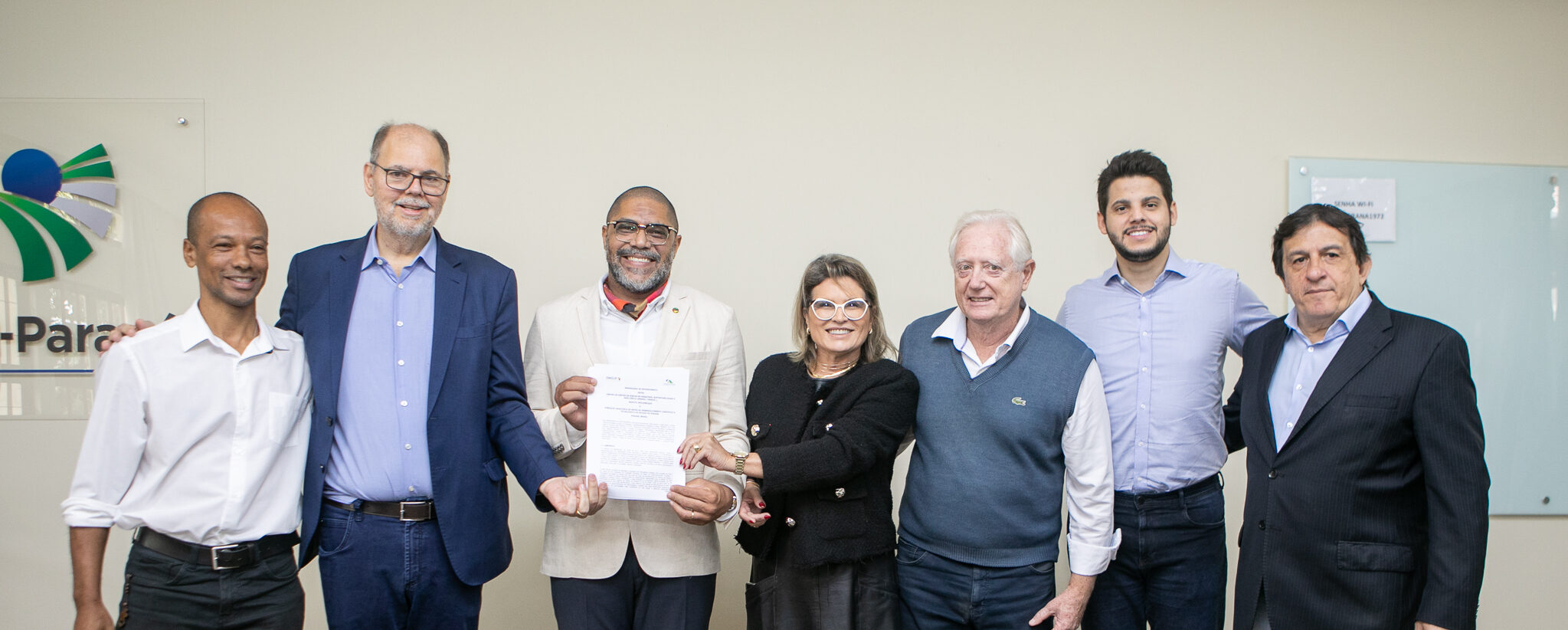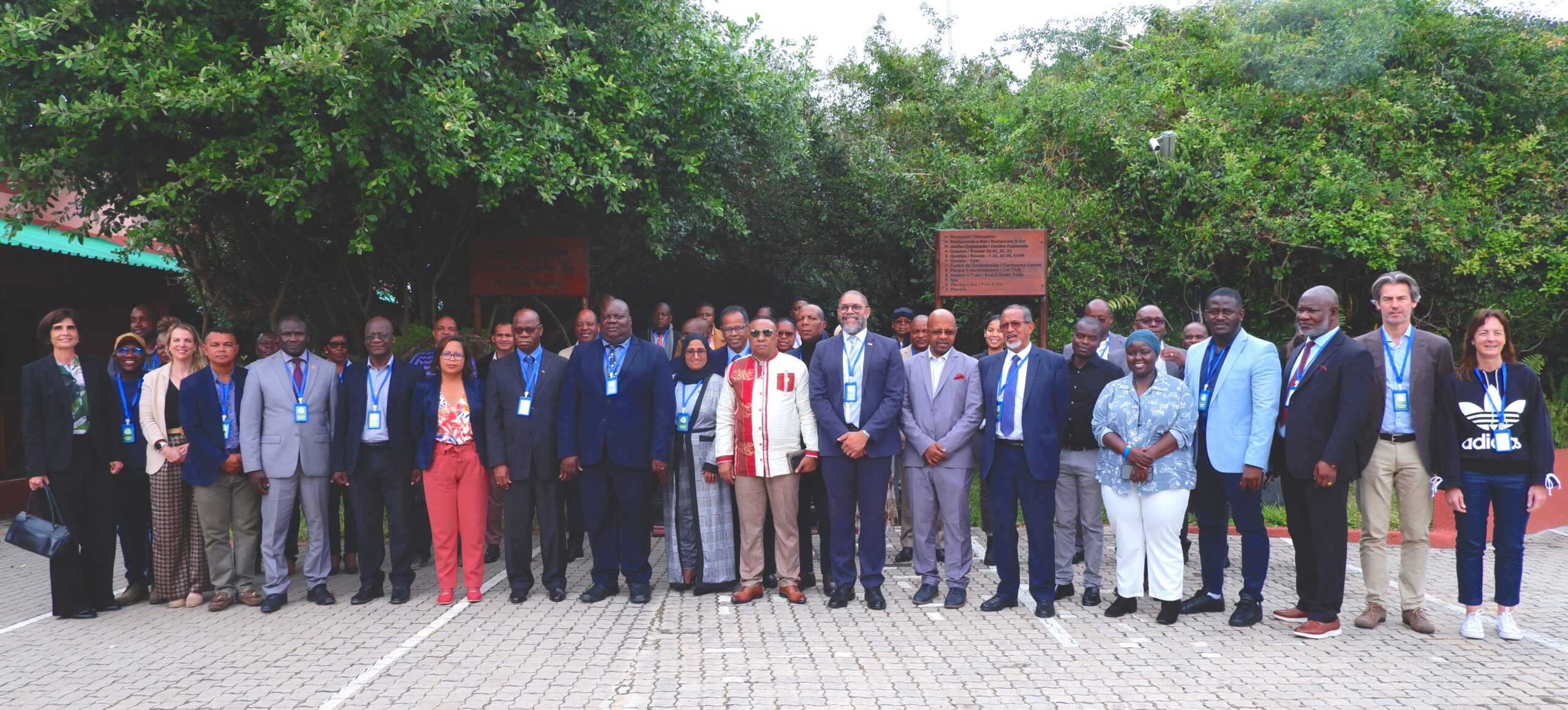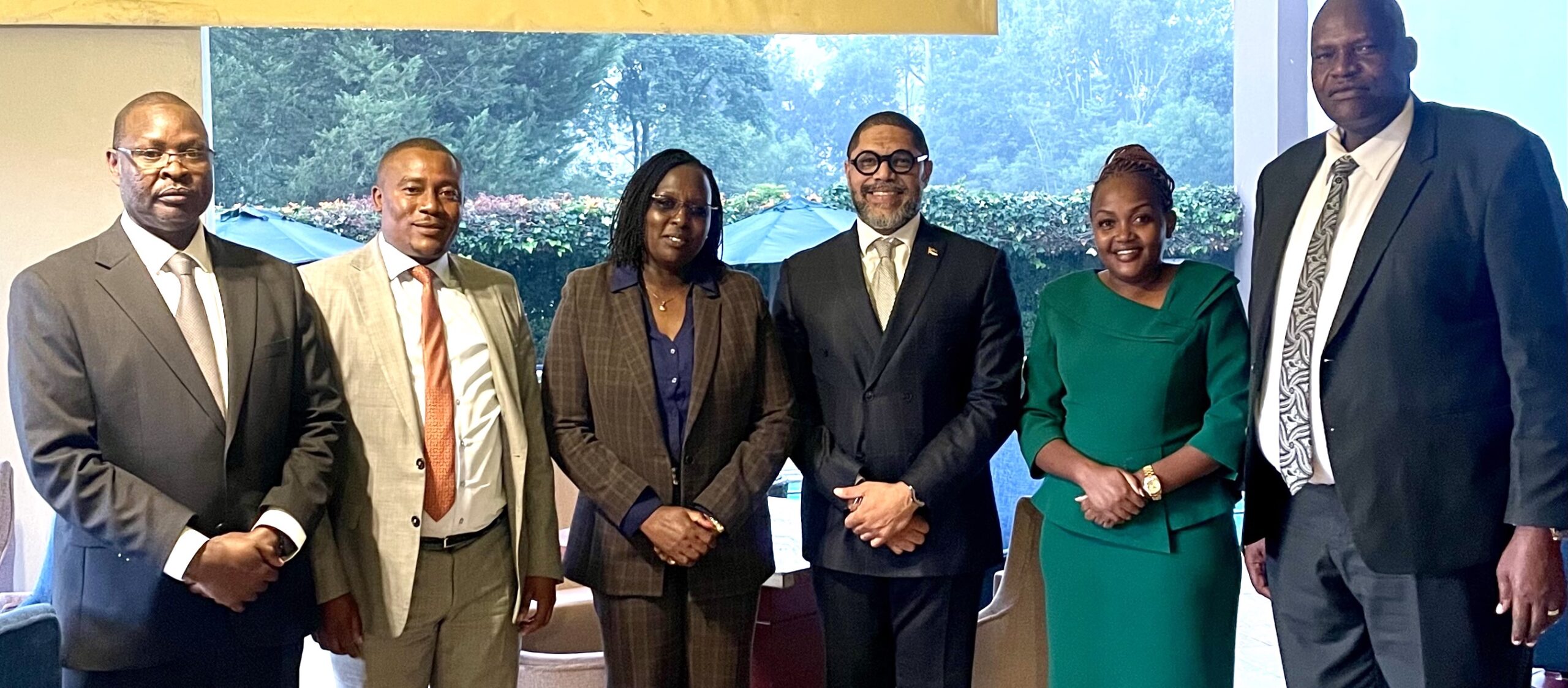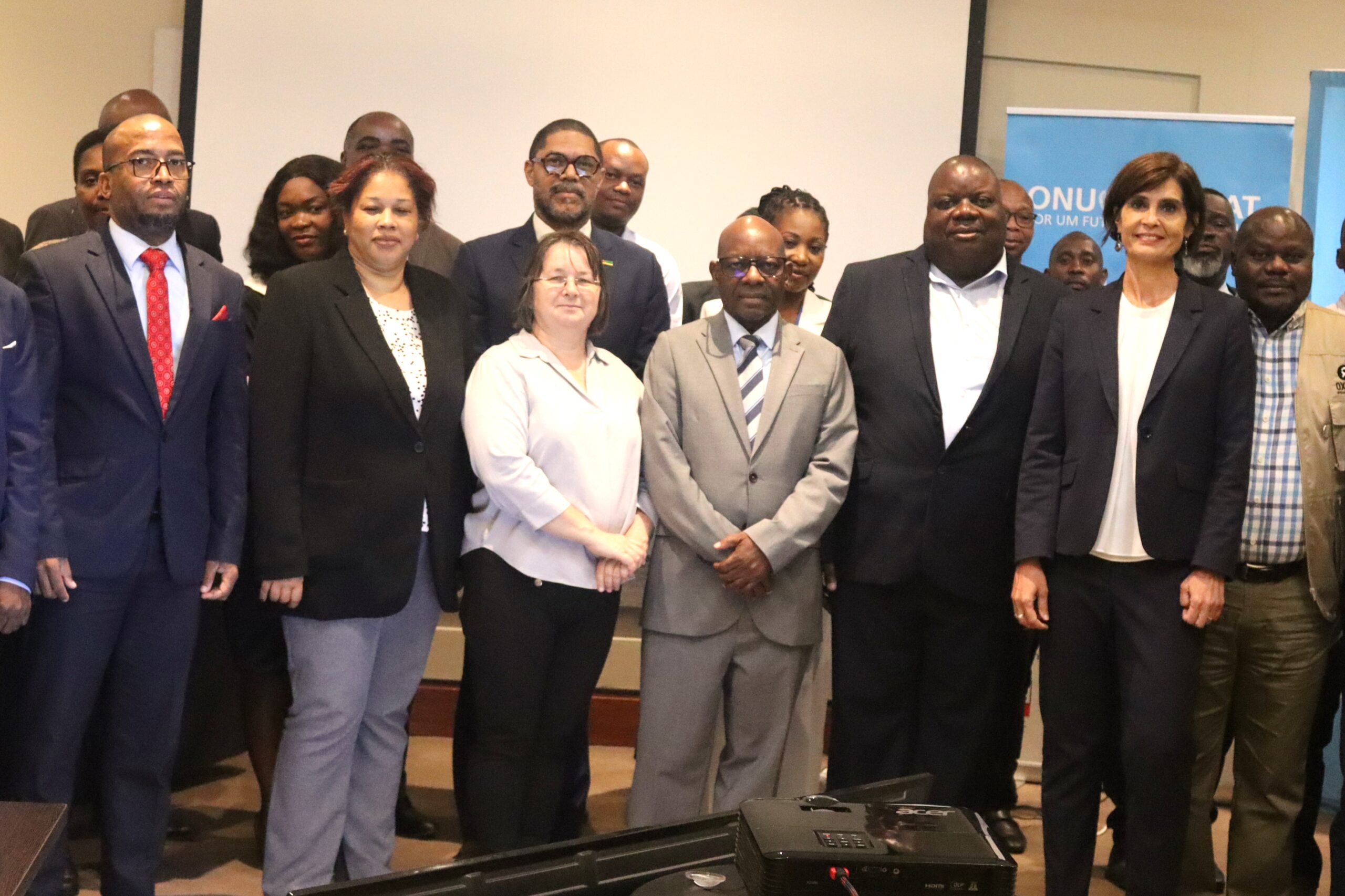Foto: Addis Ababa’s landscape/ Credit: @neiljs/ Flickr
DiMSUR is in Ethiopia enabling local people to develop their own resilience and risk management plan
Addis Ababa is the largest city of Ethiopia with a population of 3.6 million. Attracting people from other parts of the country, Addis Ababa is facing rapid urbanization and population growth, with an annual growth rate of 3.8%. The estimated population living in the capital of Ethiopia by 2017 will be near 10 million.
Also known as the diplomatic capital of Africa, Addis Ababa is where the African Union and the United Nations Economic Commission for Africa are based. At the same pace Addis Ababa increases its strategic importance for the African continent; the city faces development challenges related to urbanization, water safety, poverty, and social vulnerability. All those factors may intensify the impacts of natural and manmade disasters, such as flooding and fires.
That is why DiMSUR (the Technical Centre for Disaster Risk Management, Sustainability and Urban Resilience) is now present in Addis Ababa. Our team of technicians is working to enable local people to develop their own city resilience plan of action, with the CityRAP tool.
DiMSUR’s team was in Lideta sub-city (central area of Addis Ababa) during the last week of June to deliver the CityRAP Crash Course and to launch the 8-week process that aims to develop a document with set of actions to strengthen the urban resilience of Lideta. The team trained 8 local people from the community of Lideta to conduct self-assessment questionnaires, participatory mapping within the community, and the compilation of data.
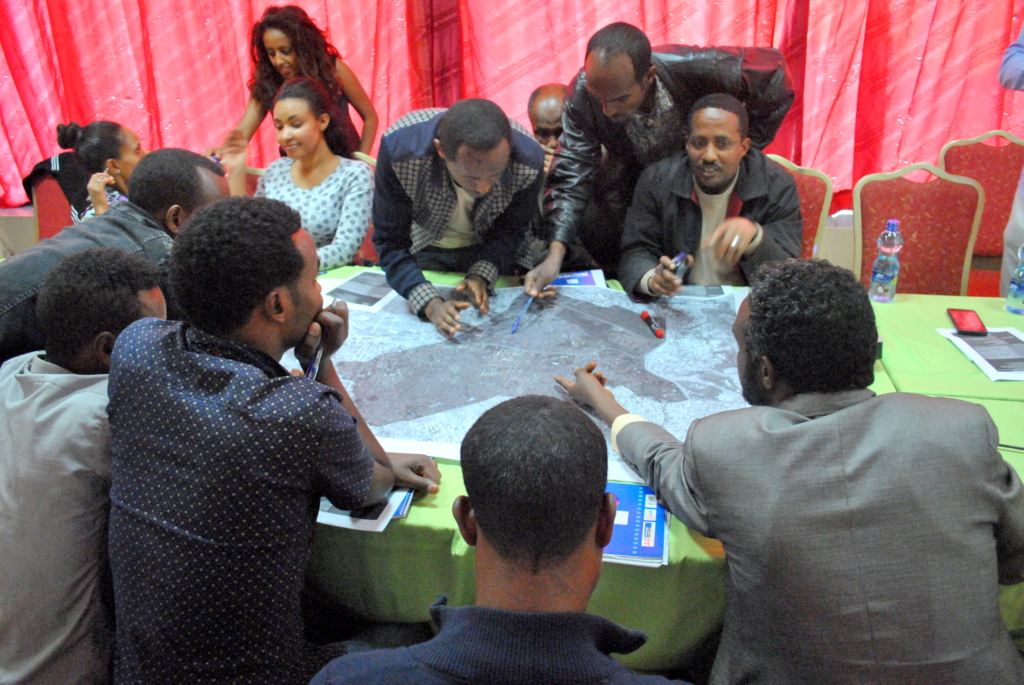
“The implementation of the tool in Lideta was very different from the 5 previous cities [check other cities where the CityRAP tool was introduced]. First of all, this is an upgraded version of the tool, improved questionnaire, and reviewed mapping methodology among others improvements. It is also the first time that CityRAP is being applied in a big city. It shows how flexible the tool is and it can fit in various urban contexts. CityRAP being designed for small and medium cities, we decided to adapt and test the tool in the sub-city of Lideta”, explain Chiara Tomaselli, member of the DiMSUR team of technicians.
Now the DiMSUR’s team of trainers is back to Addis to implement the phase 3 of the CityRAP tool process, which consists of the analysis of the data collected by the locals. The results will be discussed and analyzed, focusing on strategic areas: urban governance, urban planning, environment, basic services, infrastructure, urban society, economy and disaster risk management. The results will then be presented during a “Prioritization workshop”, the most important day of the whole process. During the workshop, community representatives and authorities will decide what are the most urgent issues to address for improving the resilience of their sub-city.
